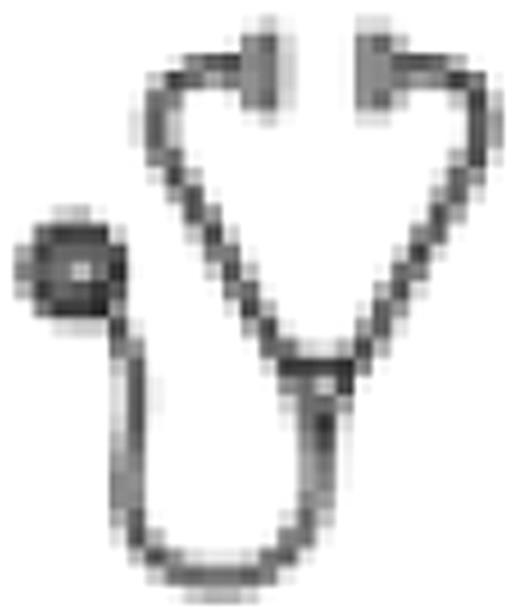Abstract
Abstract 210
Despite progress in CML therapy, patients (pts) who fail 2 or more tyrosine kinase inhibitors (TKI), or pts with T315I mutation, have no available treatment options. Ponatinib (AP24534), an oral multiple TKI, is a potent pan-BCR-ABL inhibitor with activity against all tested imatinib-resistant mutants, including T315I. It also inhibits other kinases, including FLT3.
An ongoing, open-label, dose escalation, phase 1 trial aims to assess the safety of ponatinib, establish a recommended dose, and investigate anti-leukemic activity. Pts with refractory hematologic malignancies were enrolled to receive a single daily dose of ponatinib in capsule or tablet form.
As of July 16, 2010, 67 pts (55% males) were enrolled: median age, 58 (range 26–85) years; median time from initial diagnosis to start of ponatinib, 5.2 (range 0–21) years. Diagnoses included 57 CML (42 chronic [CP], 7 accelerated [AP], 8 blast phase [BP]), 3 Ph+ acute lymphoblastic leukemia (ALL), 3 acute myeloid leukemia (AML), and 4 other hematologic malignancies. Prior therapies in CML/Ph+ pts included imatinib (96%), dasatinib (89%), nilotinib (55%); 95% and 64% failed ≥2 and ≥3 prior TKIs, respectively; 72% had BCR-ABL mutations at study entry or documented history, including 23 (38%) T315I, and 7 (12%) F317L. At the time of reporting, pts were treated at doses up to 60 mg, 43 (64%) pts remained on therapy, 24 (36%) discontinued: 8 (12%) progressive disease; 8 (12%) investigator decision; 5 (8%) unrelated deaths; 2 (3%) consent withdrawn; 1 (2%) unrelated adverse event (AE), CNS bleed. The most common drug-related AEs (≥10% any grade) were thrombocytopenia (24%), headache (14%), nausea (14%), arthralgia (13%), fatigue (13%), anemia (11%), increased lipase (11%), muscle spasms (11%), rash (11%), myalgia (10%), and pancreatitis (10%). At 60 mg, elevation of pancreatic enzymes and pancreatitis were dose-limiting toxicities (DLTs) in 4/14 treated pts. To date, 1/22 pt treated at 45 mg had a DLT (grade 3 rash). All DLTs were reversible. Overall, 48 Ph+ pts were evaluable for response (at least 1 response assessment). Of 32 evaluable CML CP pts, 30 (94%) had complete hematologic response (CHR), and 20 (63%) had major cytogenetic response (MCyR): 12 complete CyR (CCyR), 8 partial CyR (PCyR). Of 20 CML CP cytogenetic responders, 18 remain on treatment (mean duration 326 [range 142–599] days) without progression, 13 of whom had response confirmed with at least a second assessment (9 with MCyR ≥6 months), and 2 pts treated at 4 and 15 mg progressed after PCyR. Of 11 CML CP pts with T315I mutation, 11 (100%) had CHR, 9 (82%) had MCyR (8 CCyR). For 16 evaluable CML AP/BP or Ph+ ALL pts, 5 (31%) had major hematologic response (MHR), 3 (19%) had MCyR, 1 (6%) had minor CyR. Of 9 CML AP/BP or Ph+ ALL pts with T315I mutation, 3 (33%) had MHR, 2 (20%) had MCyR. Responses were also observed in heavily refractory pts with no mutations, and pts with other mutations, who are resistant to approved TKIs: 1 CCyR and 1 PCyR in 2 F317L pts who each failed imatinib, dasatinib, and nilotinib; a F359C pt who failed imatinib and nilotinib had CHR and CCyR. Overall, 13/60 (22%) Ph+ pts achieved major molecular response (MMR), including 12/42 (28%) CP pts, 6/15 (40%) with T315I mutation confirmed at baseline, 10/40 (25%) with starting doses ≥30 mg. 12 MMRs occurred in pts who were on treatment '4 months (4 MMRs ≤2 months). MMRs were also achieved in pts with M351T, F359C, F317L, M244V, G250E mutations, and 1 pt with no mutation. PD data demonstrate sustained inhibition of CrkL phosphorylation above 15 mg. Evaluation of ponatinib tablets began in April 2010 with intent to transition from capsules to tablets for future studies. To date, 10 pts received ponatinib tablets: n=9, 45 mg; n=1, 60 mg. Initial safety, PK/PD, and molecular response data suggest both dosage forms behave similarly. Importantly, at doses ≥30 mg, both result in trough concentrations >40 nM—the target concentration for inhibiting all BCR-ABL mutants, including T315I.
ponatinib has an acceptable safety profile at clinically effective doses in this refractory population. The 45 mg dose (tablet form) was chosen as the recommended dose for further study. There is strong and continually increasing evidence of anti-leukemic activity in pts with T315I mutations, and pts resistant to second generation TKIs. Emerging MMR data demonstrate early responses in pts refractory to second line agents.
Cortes:ARIAD: Research Funding; Chemgenex: Research Funding; Deciphera: Research Funding. Talpaz:Novartis: Honoraria. Deininger:ARIAD: Advisory Board, Consultancy, Honoraria; Novartis: Advisory Board, Consultancy, Honoraria; BMS: Advisory Board, Consultancy, Honoraria; Genzyme: Research Funding. Shah:Novartis: Consultancy; Bristol-Myers Squibb: Consultancy. Flinn:ARIAD: Research Funding. Hu:ARIAD: Employment. Kan:ARIAD: Employment. Rivera:ARIAD: Employment. Clackson:ARIAD: Employment. Haluska:ARIAD: Employment. Kantarjian:Novartis: Consultancy, Research Funding; BMS: Research Funding; Pfizer: Research Funding.

This icon denotes an abstract that is clinically relevant.
Author notes
Asterisk with author names denotes non-ASH members.

This feature is available to Subscribers Only
Sign In or Create an Account Close Modal